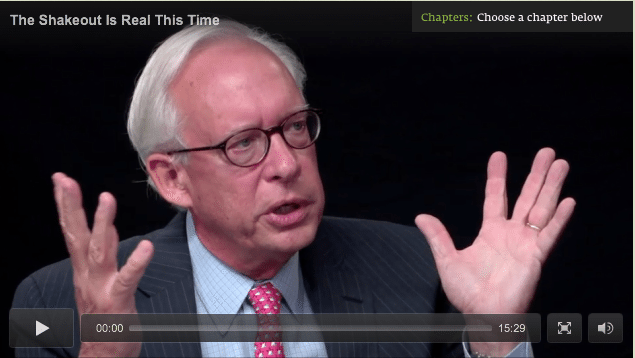Mega-Manifest Destiny

Every ten years or so, the private equity industry wrings its hands over what exactly it should call itself. The repellent “corporate raiders” gave way to the still-ominous phrase, “leveraged buyouts.” “Private equity” arrived as a sanitized, hostility-free alternative, though it, too, has acquired a pejorative edge.
Nonetheless, it appears that “private equity” is here to stay.
But the industry has a new naming problem—while “private equity” is a technically accurate term for a certain kind of investing, it is now being applied to the entire range of investment and advisory activities now overseen by firms that started life as LBO shops. Blackstone is one of the largest real estate investment firms in the world; in fact, its property arm is larger than its private equity group. “Private equity” firm Oaktree is a dominant credit investor. Mitt Romney’s former “private equity” firm has five major business lines, only one of which is focused on traditional private equity. But what else to call the collection of firms that continue to diversify their businesses as they grow? Perhaps “private equity” will take on a useful designation that is independent of its roots, much as “investment banking” defines a range of activities on Wall Street, most of which are neither investing nor banking.
A distinctive term is necessary because these firms are unique entities on Wall Street, even as they increasingly are coming to define the Wall Street of the 21st century. And while all firms remain different by way of strategy, resources and culture, they are all getting into similar businesses and geographies. It is as if a treasure map to a new kind of Wall Street powerhouse has been unearthed, and everyone is racing to find it.
To see what the race looks like, I created a back-of-the-napkin comparison of eight of the biggest multi-strategy firms to see who was and wasn’t in certain strategies and certain parts of the world. I’ve given each a “diversification” score based on the breadth of their operations.
A few observations:
• Of the largest eight firms, only Bain and TPG are not publicly traded. How long can this last? Perhaps the current senior partners at these two firms say they have no interest in going public, but what about the next generation?
• Every firm now manages a credit strategy,
in some cases enormous platforms like Blackstone’s GSO. Credit and buyouts seem to marry very well, all the way down to the middle market, where BDOs and lending divisions have proliferated.
• All eight have operations in North America, Western Europe and East Asia.
Some of the strategy/geography “holes” are notable, and could indicate the next big hire or acquisition. Blackstone does not offer any direct hedge funds, though it has one of the largest hedge fund-of-funds platforms. By contrast, its acquisition of the Credit Suisse secondaries division means it is now in the business of managing the fund interests of rival private equity firms, despite having its own direct private equity investment platform. Bain is the last of the “megas” with no real estate division. Apollo, despite being a master of the capital markets, offers no advice-for-fee in this area, like Blackstone and KKR. Another hole—Carlyle is everywhere in the world but Russia. But it’s the only firm with a presence in Africa.
In ten years will any of these firms (if they remain independent entities) remain holdouts for any of these strategies or geographies? Not likely. And the list of businesses lines operated by “private equity firms” may very well be twice as long.
Is private equity becoming the new “Wall Street?” Analysis by Privcap CEO David Snow







